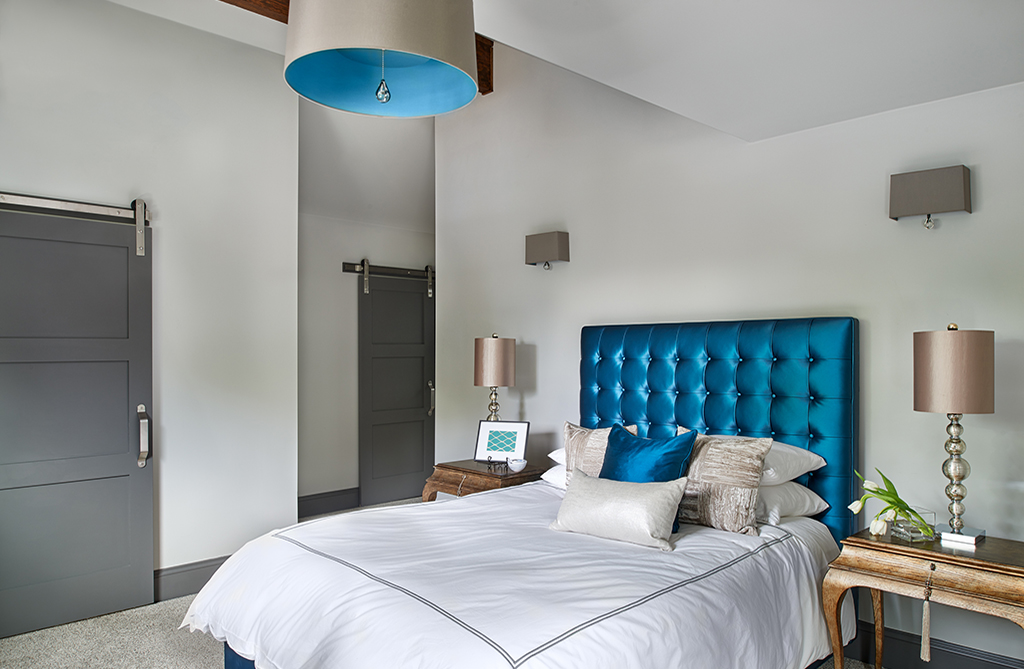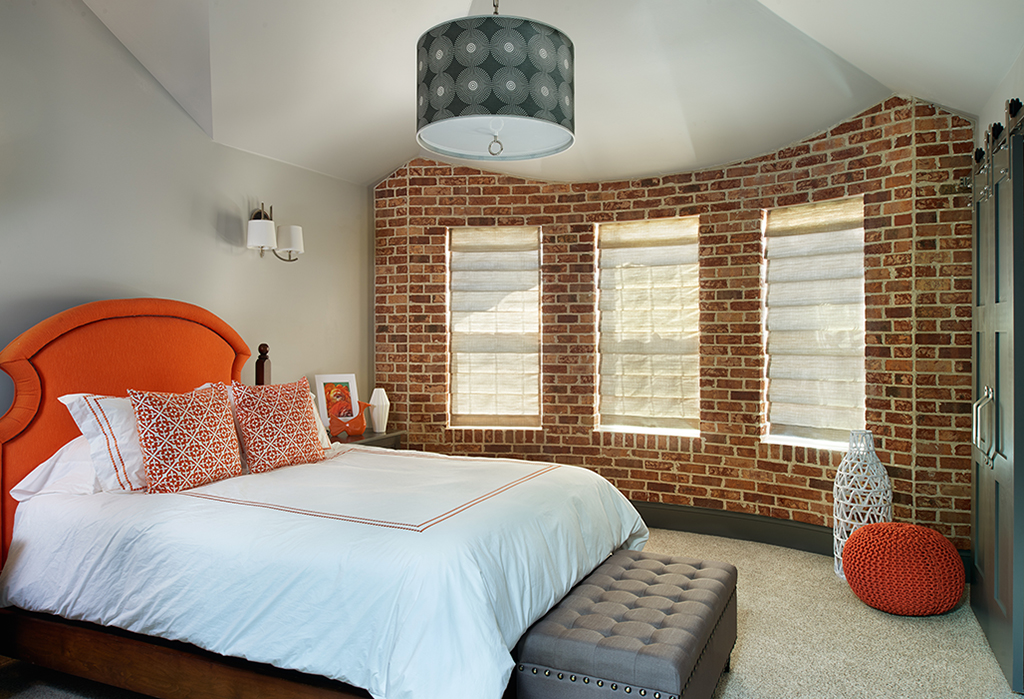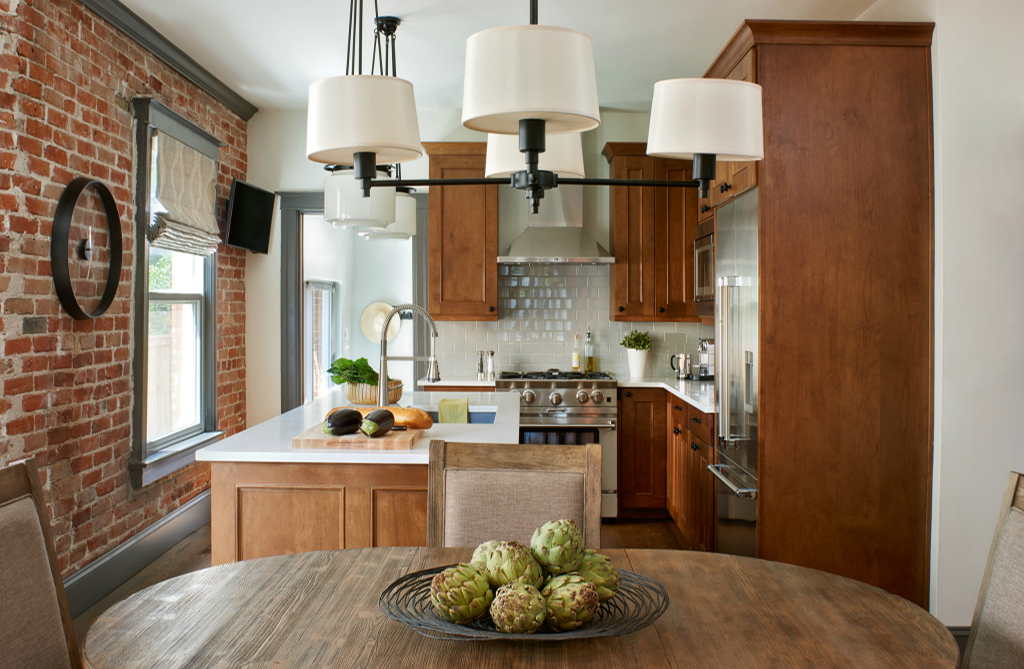
Make Your Private Space Cohesive with Your Whole Home
Elevate your overall design and give it a polished, professional look!
By Camille Wilson
Have you ever walked through a beautiful home and noticed that each space makes sense with the next and coordinates nicely with the entire home? That is almost certainly not accidental. Sometimes the connections that create a cohesive design are subtle, perhaps as simple as a texture or specific material appearing several times in different rooms. Other times, it might be continuous flooring or a consistent color palette that carries an interior design theme from room to room, but it is often the combination of these elements that bring your whole home together.
You may have already incorporated some cohesive design tips into your open floor plan or main living areas, but continuing them into the private spaces — bathrooms and bedrooms, even the laundry room — can further elevate your overall design and give it a polished, professional look.
Beautiful Habitat owner, Tennille Wood, says every home has some character elements that can be repeated, like unique moldings or exposed brick walls. “Highlighting the shared elements, either in adjacent rooms or throughout the property, connects the spaces,” said Wood.
Read on as we share five interior design concepts to make your private space cohesive with your whole home.
Schedule a Consultation Today
Use Consistent Trim Style and Color in All Areas
Crown molding and trim can provide a formal touch by adding it around a ceiling to dress up a room or to frame an art display. Informal spaces still use trim, commonly to frame doors and windows and as baseboards between the walls and flooring. By using the same trim pattern in all areas and levels of the home — and staining or painting it the same color in private and public areas alike — you create one common thread that gives cohesive design across the whole home.
This home incorporates painted gray molding and trim around the fireplace, baseboards and doors throughout the upper and lower levels, including the shared entry and living areas and private bedroom and bathrooms. The consistency lends a comfortable, natural flow across the spaces.
Repeat a Color Palette Throughout the Home
A single color palette or shades of those colors appearing throughout your home give a cohesive feel to the design. This can be achieved with paint or wall coverings, window treatments, furniture or accessories.
This is most certainly not limited to neutral gray, white or brown, either! One of the bedrooms in this gorgeous home uses a blue upholstered headboard and lampshade while the other has orange elements. Both colors are found as accents in the main living areas of the home in different hues and textures via artwork, an accent chair, throw pillows and even the blue dishes stacked visibly in the kitchen. These variations within the same color story keep the space from feeling overly coordinated but similar enough to maintain cohesion.
Use Consistent Flooring
Regardless of the material choice, a single flooring throughout the space pulls the spaces together and makes them feel more connected. While hardwood flooring is a popular, timeless choice, any materials that honor the period and style of your home, as well as your family’s needs and lifestyle, will work.
If one material is not practical for the entire home, limiting selections to two or three can still maintain the cohesive design as long as the color tone is consistent, such as this stained hardwood flooring and neutral beige carpet keeping each space feeling familiar and rooted within the home.
 View this entire Beautiful Habitat project
View this entire Beautiful Habitat project
Create Texture Continuity
Just as continuity of color can tie two or more rooms together, architectural elements that have texture can bring unity as well. “Repetition of elements is the key to creating a cohesive home,” says Wood. “Those elements can include built items like flooring or brick walls as well as decorative elements like color and texture.” One of the major elements of interior design, texture refers to how a surface looks and feels, adding interest and depth to spaces and often providing the finishing touch on room design.
While textiles such as drapes or pillow coverings are an easy way to incorporate texture, this home maximizes its exposed brick in the dining room by repeating it in the bedroom and mud room, adding nice continuity throughout the home’s interior design. The geometric pattern of the brick is repeated in accent pillows and accessories, while contrasting texture in the soft upholstered headboard and sleek padded ottoman help avoid monotony.
Tie it All Together with Stylish Window Treatments and Lighting
Once you have established your home’s style through color, shape and texture, carry it all the way to the window coverings and light fixtures to drive maximum continuity throughout the home. Even with a separation between two levels of your home, as with this staircase, established themes of color, wood and texture combine with the details here to connect both levels of the home. Light fixtures and window shades complement the style and color story to complete the look.
If your home is disjointed and lacks a cohesive style between the main living areas and your private spaces, consider incorporating these tips into your interior design. Consistency in color, flooring, texture, trim and your finishing touches could be all it takes to pull the rooms together, improving continuity and flow across your home.
If you get stumped or need a little expert advice, let us know. Fill out our pre-consultation form now!
Ready for a remodel to achieve a cohesive whole home look? Check out the benefits for a whole home remodel.



